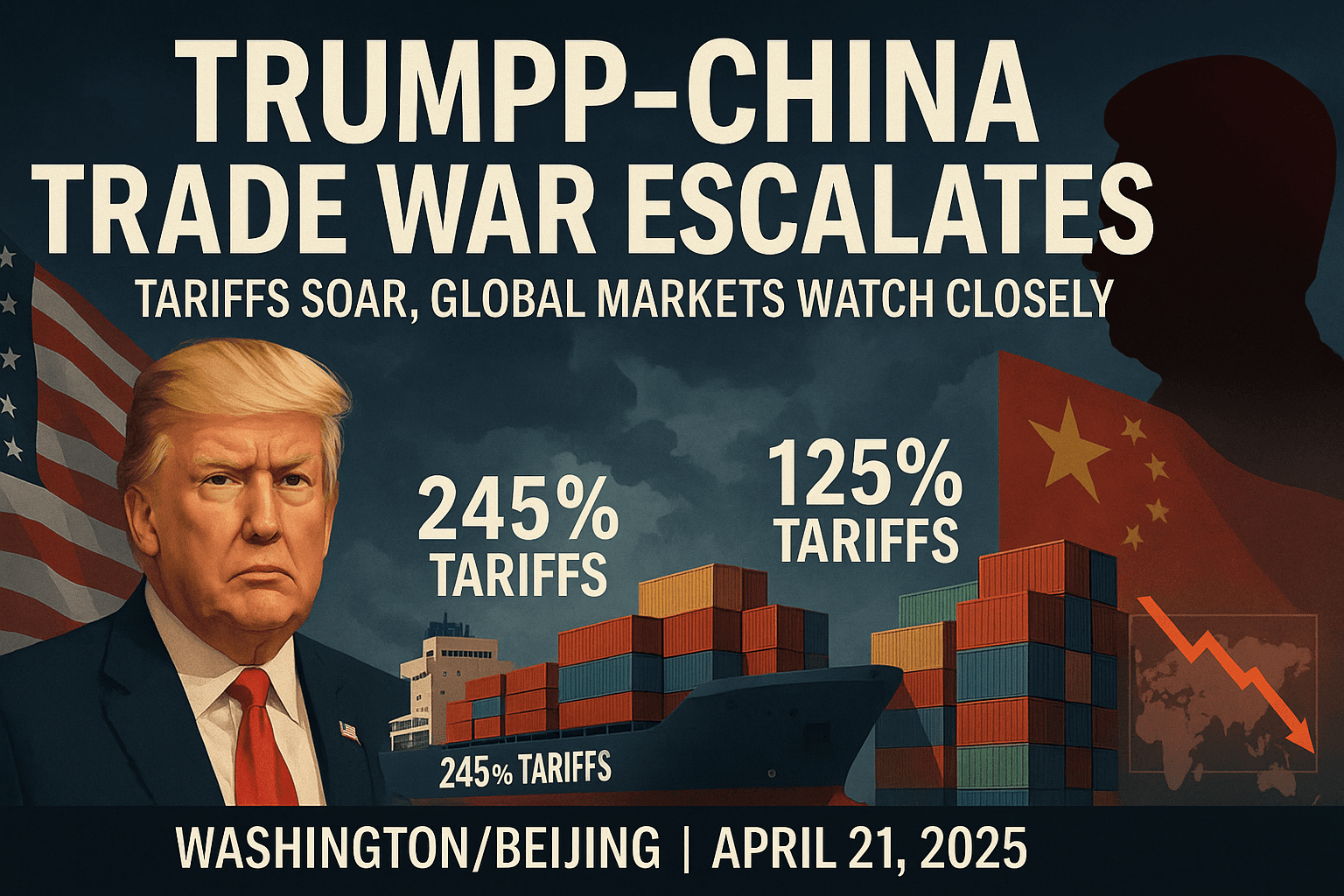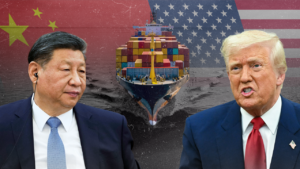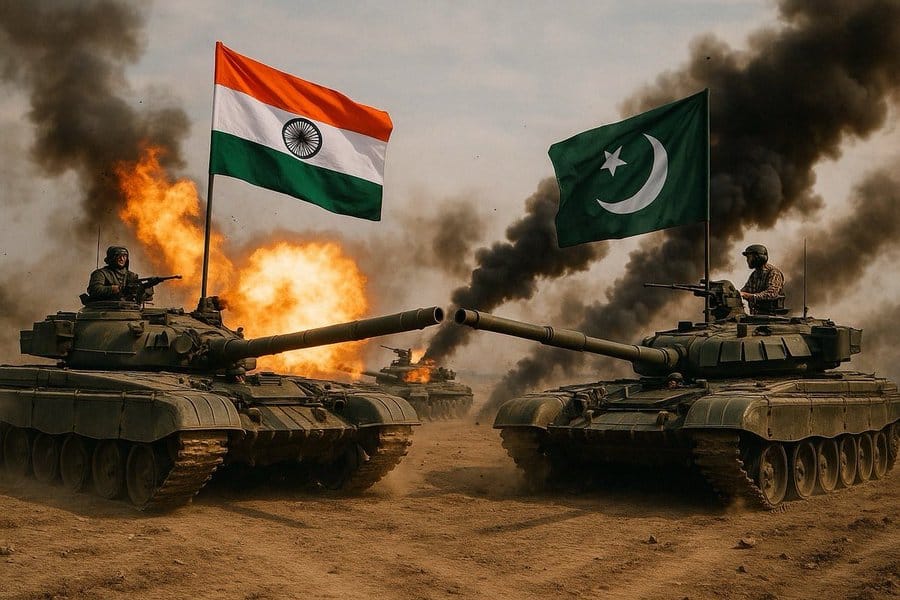
Washington/Beijing | April 21, 2025
The U.S.-China trade war has reignited under former President Donald Trump’s 2024 re-election, with both superpowers now locked in a fresh economic confrontation that threatens global supply chains and markets.
🔥 Tariffs Reach Record Highs
In a bold move, President Trump imposed tariffs of up to 245% on a range of Chinese imports, targeting sectors from electronics to steel. The administration cited national security concerns, unfair trade practices, and the need to revive American manufacturing.
China swiftly retaliated, announcing tariffs of up to 125% on U.S. exports, including agricultural products, cars, and microchips.
“We will not tolerate economic bullying,” said a spokesperson for the Chinese Ministry of Commerce.
🛳️ Port Fees on Chinese-Built Ships
The U.S. also unveiled a controversial plan to levy high port fees on ships built in China, aiming to reduce Beijing’s dominance in global shipbuilding and protect American dockworkers and builders. This policy could impact major shipping lanes and raise costs on imported goods.
📉 Impact on Businesses
U.S. farmers, especially soybean and corn exporters, are feeling the heat, as China shifts purchases to other markets. Tech giants like Apple and Tesla have also warned of rising production costs due to component tariffs.
Wall Street responded with caution, with the Dow Jones Industrial Average falling 480 points after the announcement.
🏦 China’s Economic Countermove?
Reports suggest Beijing may consider reducing its holdings of U.S. Treasury bonds, a move that could send shockwaves through global financial markets. Analysts warn that such retaliation would create uncertainty in debt and currency markets.
🛫 Aviation Caught in Crossfire
In a symbolic gesture, a Boeing 737 Max originally ordered by China’s Xiamen Airlines was sent back to the U.S. This reflects growing resistance among Chinese firms to doing business with American manufacturers.
🌐 Global Ramifications
The renewed trade war is raising concerns among global economies still recovering from post-pandemic inflation. The EU, India, and ASEAN nations are watching closely, with some seeing opportunity to boost their own exports while others fear a ripple effect of economic instability.










